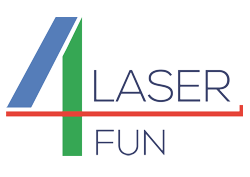Results of the work in the Laser4Fun project has been published as:
Vittorio Vercillo, Norbert Karpen, Alexandre Laroche, Javier Alejandro Mayén Guillén, Simone Tonnicchia, Raphaelde Andrade Jorge, Elmar Bonaccurso (2019) Analysis and modelling of icing of air intake protection grids of aircraft engines. Cold Regions Science and Technology, Volume 160, April 2019, Pages 265-272.
Abstract
Icing represents a major problem in the aviation industry. While icing of aerodynamic surfaces such as airfoils due to the impingement of supercooled liquid water droplets is widely studied, even if not yet fully understood, icing of supporting structures like protection grids of engine air intakes has been investigated to a lesser extent. An optimization of the design of the grids will help to reduce icing severity and delaying or avoiding loss of efficiency that could lead to hazardous situations. The present study investigates the icing behaviour of stainless steel protection grids in use on rotorcraft and turboprop engines. New experimental and analytical tools were developed to enable a quantitative study of grid icing under representative icing conditions in a lab-scale icing wind tunnel. The variation of the most relevant parameters like liquid water content of the cloud, airspeed, ambient temperature and mesh size of the grid allowed the identification of their influence on the icing behaviour. Further analysis of the experimental data led to the development and validation of a general physical model for ice accretion on grid structures.
